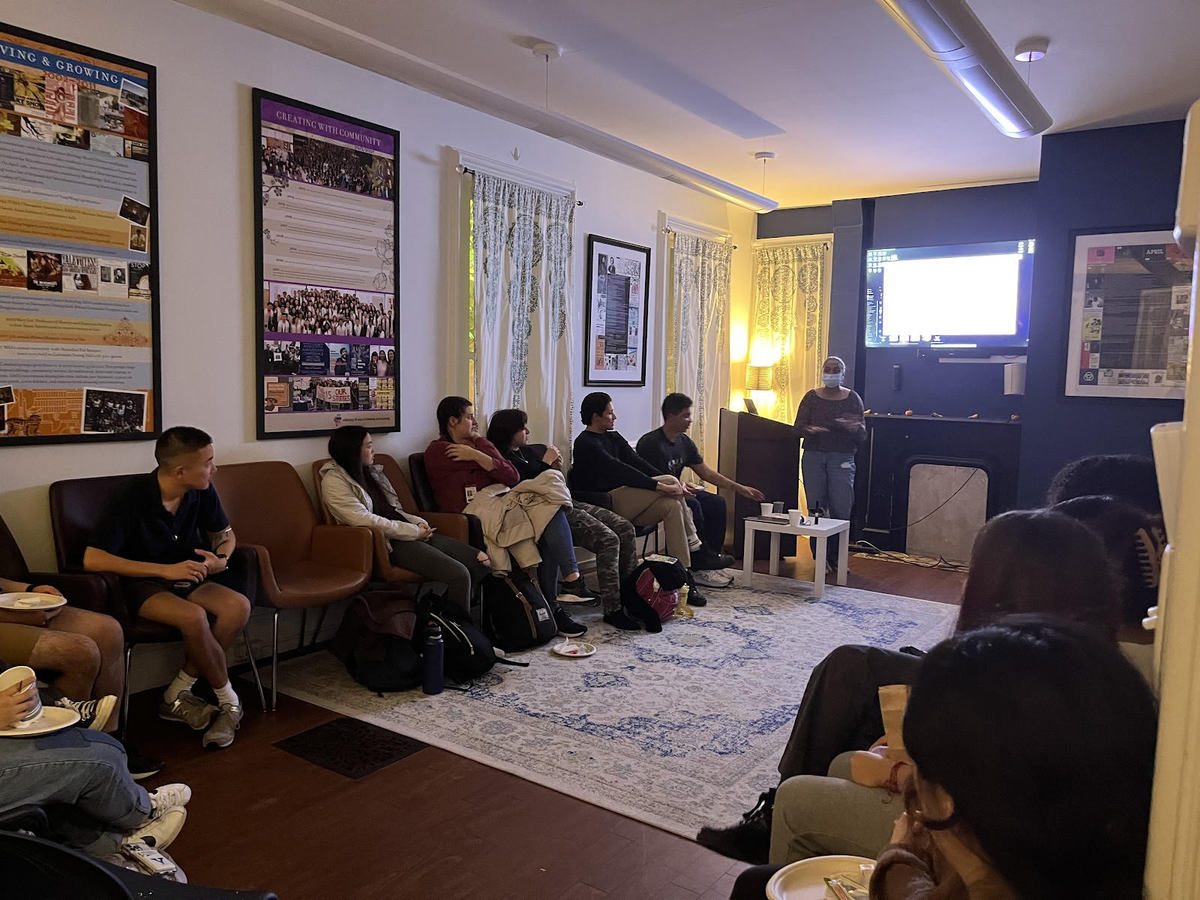Cultural centers host intercultural spirit stories night for Halloween
Students from the Native American Cultural Center, Asian American Cultural Center, Afro-American Cultural Center and La Casa Cultural gathered to share ghost stories on Tuesday night.

Natasha Khazzam, Contributing Photographer
Students from Yale’s cultural centers embraced the spirit of Halloween on Tuesday, gathering in the Asian American Cultural Center to swap intercultural ghost stories.
The event — a collaboration between the AACC, the Native American Cultural Center, the Afro-American Cultural Center and La Casa Cultural — featured five storytellers, each of whom shared a folktale or presentation from their respective heritage. The presentations ranged from ghost stories to an exploration of themes including domestic abuse, gender roles and loss in traditional folklore.
“[Storytelling] is a very common part of Mexican culture and I think Latin American culture in general,” said Daisy Sanchez ’24. “I grew up hearing stories from my parents and family friends.”
Sanchez recounted the traditional Mexican folktale “La Llorona,” which tells the story of a young woman named Maria who drowned her children in a fit of jealousy. The story, whose title translates to “the weeping woman,” remains a prevalent part of Mexican culture today, as the sounds of running water are typically associated with the cries of “La Llorona.”
“My dad grew up near a river, and his family would make it a point not to have kids out after sundown especially during the seasons of heavy rain,” Sanchez said. “I think there’s a very deep sincere belief in Maria and her story.”
Diza Edghina Hendrawan ’25 shared the tales of five Javanese ghosts: “Babi Ngepet,” a boar demon, “Genderuwo,” a shape-shifting beast, “Banaspati,” a fire spirit, “Jerangkong,” an egg thief and “Kisut,” a genderless specter who haunts those with bad intentions.
Hendrawan even recounted a personal encounter with the supernatural while visiting her grandparents’ home in Java.
“I saw this baby’s head poke out from the bathroom,” Hendrawan said. “It came out a little bit more and it was on all fours. I sat there for a moment, I internalized it and I screamed.”
While the event celebrated unique aspects of various different cultures, the stories shared also touched upon important issues such as gender roles and domestic violence, emphasizing the relevancy of folktales in the modern world.
Among the stories featured was “Nale Ba,” an Indian tale about a witch from Bengaluru who lures men from their homes at night with the intention of killing them.
Ishikaa Kothari ’25 noted the cultural significance of the story, which can be perceived as more than just a form of entertainment. “Nale Ba” subverts traditional gender norms and the common discomfort women feel when leaving their homes after dark.
“It’s a shift in the gender dynamic, because men are the ones who are scared to go out,” Kothari said.
Evan Farmer ’23 described the discovery of the ancient mummies in the Mammoth Cave region of his native Kentucky, discussing the syncretism of West African and Native American spiritual practices in the region.
Yakeleen Almazán ’25 shared the story of “La Tamalera,” a Mexican folktale about a tamale vendor who kills her abusive husband and sells tamales made from his remains.
“It was eye-opening to hear different traditions, stories and legends that have been passed down through generations,” said attendee Kaley Mafong ’26. “Many of them are applicable to modern-day life.”
Spirit Stories Night was one of two intercultural events held this October.







